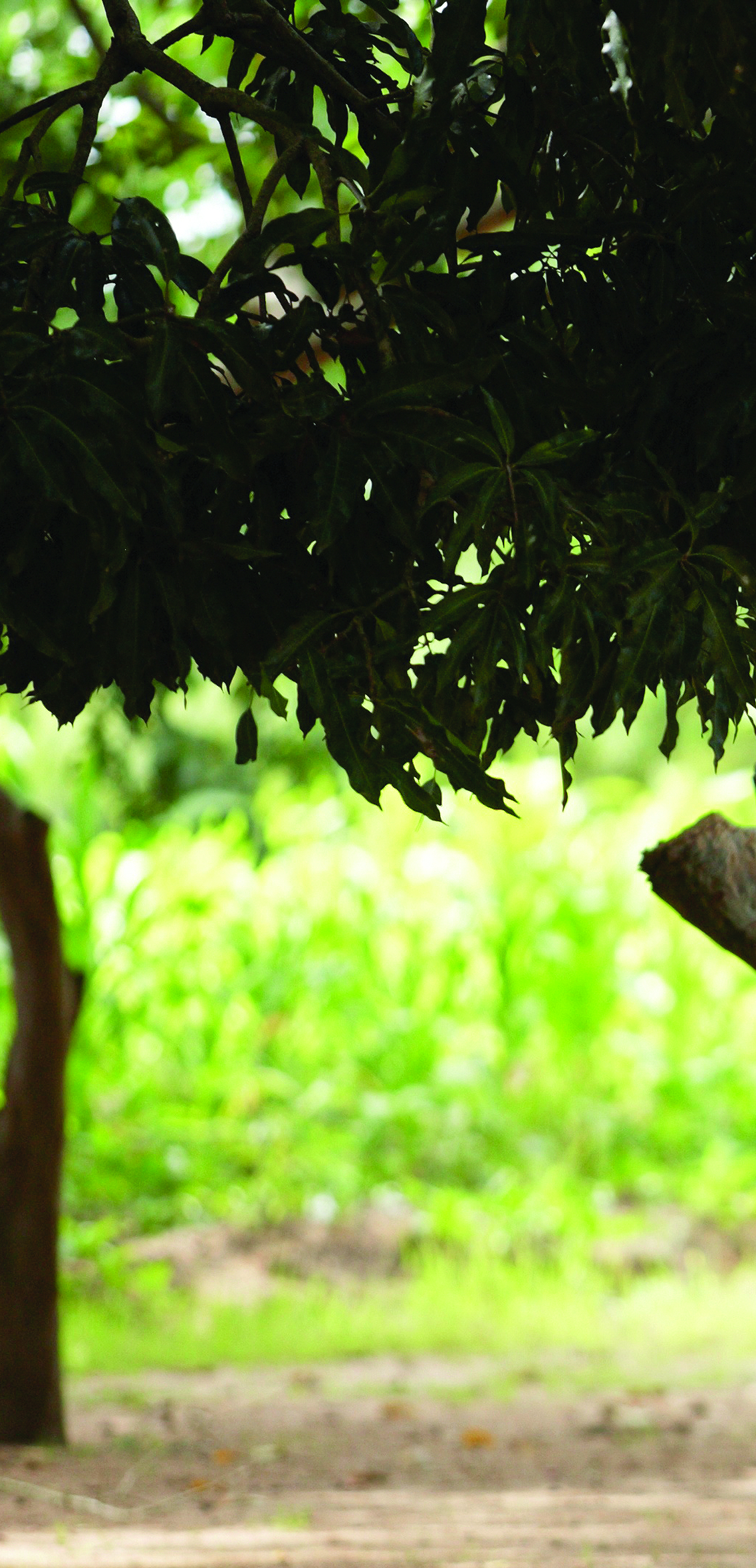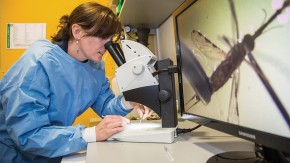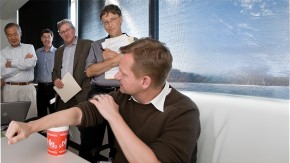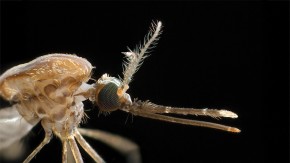Grand Challenges in Global Health Retrospective (2005-2015)
- Jan 2, 2016
- Download Retrospective

GRAND CHALLENGES IN GLOBAL HEALTH PARTNERS:
Bill & Melinda Gates Foundation
Canadian Institutes of Health Research
Foundation for the National Institutes of Health
Wellcome Trust
GRAND CHALLENGES IN GLOBAL HEALTH SCIENTIFIC BOARD:
Harold Varmus, M.D., Chair of Board and Executive Committee
Tadataka (Tachi) Yamada, M.D., Member, Executive Committee
Elias A. Zerhouni, M.D., Member, Executive Committee
Sir Roy Anderson, Ph.D., F.R.S., Member, Scientific Board
Alan Bernstein, O.C., Ph.D., F.R.S.C, Member, Scientific Board
Mary Jane Cardosa, Ph.D., Member, Scientific Board
Pierre Chartrand, Ph.D., Member, Scientific Board
Christine M. Debouck, Ph.D., Member, Scientific Board
Anthony S. Fauci, M.D., Member, Scientific Board
William Foege, M.D., M.P.H., Member, Scientific Board
Nirmal Kumar Ganguly, M.D., Member, Scientific Board
Julie Louise Gerberding, M.D., M.P.H., Member, Scientific Board
Fotis C. Kafatos, Ph.D., Member, Scientific Board
Gerald T. Keusch, M.D., Member, Scientific Board
Francis Kwesi Nkrumah, M.D., Ph.D., Member, Scientific Board
Sir Gustav Nossal, Ph.D., F.R.S., Member, Scientific Board
Odile Puijalon, Ph.D., Member, Scientific Board
Yiming Shao, M.D., Ph.D., Member, Scientific Board
Peter A. Singer M.D., M.P.H., F.R.C.P.C., Member, Scientific Board
Mark Walport, Ph.D.,MB. BChir., Member, Scientific Board
Florence Muringi Wambugu, Ph.D., Member, Scientific Board
Yongyuth Yuthavong, Ph.D., Member, Scientific Board
* * * * * * * * * * * * * * * * * * * * * * * * * * * * * *
Grand Challenges in Global Health: 2005–2015
A 10-year retrospective of 14 of the 44 original projects
CONTENTS
4 FORWARD6 MODIFYING MOSQUITO POPULATION AGE STRUCTURE TO ELIMINATE DENGUE TRANSMISSIONScott O'Neill, University of Queensland, Australia 14 HOMING ENDONUCLEASE GENES: NEW TOOLS FOR MOSQUITO POPULATION ENGINEERING AND CONTROLAustin Burt, Imperial College London, United Kingdom 20 MOLECULAR APPROACHES TO ALTER OLFACTORY-DRIVEN BEHAVIORS OF INSECT VECTORSRichard Axel, Columbia University, United States and Leslie Vosshall, The Rockefeller University, United States 26 DISRUPTION OF MALARIA TRANSMISSION BY CHEMICAL MANIPULATION OF ANOPHELINE OLFACTORY RESPONSESLaurence J. Zwiebel, Vanderbilt University, United States |
34 DRUGS FOR TREATMENT OF LATENT TUBERCULOSIS INFECTIONDouglas Young, Imperial College London, United Kingdom 42 ENGINEERING IMMUNITY AGAINST HIV AND OTHER DANGEROUS PATHOGENSDavid Baltimore, California Institute of Technology, United States 50 A MOUSE MODEL TO EVALUATE LIVE ATTENUATED VACCINE CANDIDATESRichard Flavell, Yale University School of Medicine, United States 58 A PROTECTIVE GENETICALLY-ATTENUATED P. FALCIPARUM SPOROZOITE VACCINEStefan Kappe, Seattle Biomedical Research Insititute, United States 74 LEARNING FROM THE HUMAN GENOME HOW PROTECTIVE IMMUNITY AGAINST MALARIA WORKSDominic Kwiatkowski, Oxford University/Sanger Institute, United Kingdom |
82 MOLECULAR ANALYSIS AND MODELING OF HIV-1 TRANSMISSION, CONTAINMENT AND ESCAPEGeorge Shaw, University of Alabama at Birmingham, United States 92 NANOEMULSIONS AS ADJUVANTS FOR NASAL-SPRAY VACCINESJames R. Baker, University of Michigan, United States 98 NEEDLE-FREE DELIVERY OF STABLE, RESPIRABLE POWDER VACCINERobert Sievers, Aktiv-Dry LLC, United States 106 DEVELOPMENT OF BANANAS WITH OPTIMIZED BIOAVAILABLE MICRONUTRIENTSJames L. Dale, Queensland University of Technology, Australia and Wilberforce Tushemereirwe, National Agricultural Research Organization, Uganda 114 ACKNOWLEDGEMENTS |
* * * * * * * * * * * * * * * * * * * * * * * * * * * * * *
"It might seem to some people that calling a program "Grand Challenges" is a little grandiose. And those people aren't wrong. It's an ambitious program, with an ambitious goal. We chose the name because we didn't want anyone to think small."
But we were also inspired by another grand challenge. In 1900, the mathematician David Hilbert gave a talk at a conference entitled "The Problems of Mathematics," which included a list of 23 questions mathematicians had yet to answer.
Many of the 23 problems have been solved, many have solutions that are controversial, and a few have even been proven unsolvable. But what is indisputable is that the creative thinking spurred by Hilbert's list drove the field of mathematics for decades. A century later, our partners encouraged us to think about Hilbert, because global health needed the same kind of spur. People hadn't been paying enough attention to the unique health problems faced by developing countries, and we were confident that if that changed it would save millions of lives. We were also confident that traditional thinking wasn't sufficient.
The result was the Grand Challenges program, which is now more than a decade old. We started with 44 relatively sizable grants to well-established scientists exploring fourteen grand challenges. Since then, the program has changed a lot, because we keep learning. These days we tend to give smaller grants in support of a broader range of ideas. We've also realized how important it is to work with scientists from the developing countries where the problems we're trying to solve take the biggest toll. And we're more intentional about making sure that the science we're funding can be translated into lives saved.
But when we look back at those first 44 grants and see how those projects have progressed over the past 10 years, what we see is a powerful lesson about innovation - what it is and how it works in practice. In a way, that's what this collection of papers is: a commentary on the nature of innovation.
As the writer Steven Johnson says in Where Good Ideas Come From, we tend to think of innovation as the result of geniuses toiling away in labs by themselves until all of a sudden, in a eureka moment, they find The Answer.
But it doesn't usually work that way, as these projects show.
First, innovation isn't about eureka moments; it's about years of hard work, full of blind alleys and hypotheses that turn out not to be productive. But each dead end and surprise twist adds a little bit of knowledge. That knowledge leads to small breakthroughs and eventually an accumulation of small breakthroughs leads to breathtaking solutions. Scott O'Neill has been working on a single bacterium called Wolbachia for 25 years. At first, he believed it could be the secret to eliminating dengue fever because it shortened the lifespan of mosquitos who carried it. Then he learned that it could be the secret to eliminating dengue because it actually blocks the replication of viruses within the mosquito. We still won't know for a few years if this approach is practical as a public health intervention, because the field trials just started recently. (The results so far are very promising.) Eventually, the bacterium may help stop other mosquito-borne diseases, too, but figuring that out will take even longer. That's how science works.
Second, innovators don't work alone; they collaborate obsessively. Richard Axel and Leslie Voshall needed other researchers, corporate partners, and support from universities to make their discoveries about malaria. James Dale and Wilberforce Tushemereirwe couldn't have done their work on bananas and nutrition without each other, and they don't even live on the same continent. The papers in this book are full of phrases like "with the help of," "at the suggestion of," and "with a team of." Though we talk a lot about single scientists, most of the Grand Challenges grants went to labs made up of dozens and in some cases hundreds of people, all of whom were integral to the process of discovery.
Another way in which Grand Challenges overturns the commonly held view of innovation is that there's no such thing as The Answer. Every problem can be approached from so many different angles. James Baker found a way to make vaccines easier to deliver by turning them into nasal sprays at the same time as Robert Sievers found a way to do the same thing by turning them into inhalable powder. It turns out that you can fight malaria by blocking mosquitos' sense of smell or by overwhelming it - exactly the opposite approach. The more scientists ask the question, the more likely it is that some of them will come up with an answer. In fact, that's why we structured the program the way we did, specifying the goal rather than the way to reach it. That way, we free the smartest people in the world to follow their instincts about the best way forward.
David Hilbert talked about the problems of mathematics over a hundred years ago. "Every age has its own problems," he said, "which the following age solves." That's not good enough when millions of lives are at stake. We want to solve the problems of this age as soon as possible. People tend to underestimate how long new discoveries will take - but we also underestimate how revolutionary they'll be. Things happen later than we think they will, but they change the world more than we thought they would. An investment in any single innovation comes with no guarantee. But an investment in innovation as a whole is guaranteed to be paid back many times over. At 10 years into this generations-long process, we're confident that big, bold ideas - including some from the Grand Challenges program - will change the world.
GRAND CHALLENGES IN GLOBAL HEALTH
Bill & Melinda Gates Foundation
* * * * * * * * * * * * * * * * * * * * * * * * * * * * * *
ACKNOWLEDGMENTS
MICHAEL WALDHOLZ
Reporting and writing
Michael is a Pulitzer Prize-winning journalist who served as a senior reporter, editor, and bureau chief at the Wall Street Journal for 25 years, and later as the managing editor at Bloomberg News/Businessweek for six years. He is currently a Senior Editor at InsideClimate News.
HELEN PICKERSGILL
Scientific editing and The Science sections
Helen is a cell biologist and served as scientific editor for leading scientific journals, including Science, Science Translational Medicine, and Developmental Cell. She is currently an independent scientific editor at Life Science Editors.
|
gcgh.grandchallenges.org 
©2015 Bill & Melinda Gates Foundation. All Rights Reserved. Bill & Melinda Gates Foundation is a registered trademark in the United States and other countries. Printed on paper made from 100 percent post-consumer waste fiber and manufactured using wind-generated energy. |

|



